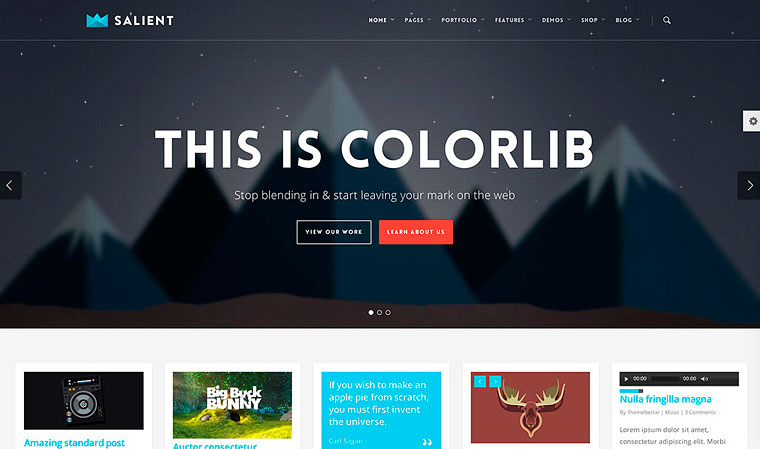The Ultimate Guide to Modern Web Design: Tips, Tools, and Trends
The Ultimate Guide to Modern Web Design: Tips, Tools, and Trends
Blog Article
Recognizing User Experience: Key Principles for Successful Website Design
In the realm of web design, recognizing customer experience (UX) is vital to creating systems that not just draw in yet also preserve individuals. Key principles such as intuitive navigating and effective comments systems play crucial functions in cultivating user contentment. Furthermore, considerations for ease of access ensure that all users can engage with the content effortlessly. The nuances of aesthetic layout and the importance of iterative screening frequently remain neglected. As we discover these foundational aspects, it comes to be obvious that understanding UX is not merely a choice but a necessity for success. What are the effects of neglecting these principles?
Significance of User Experience

In the world of internet layout, one can not take too lightly the value of individual experience (UX) as a pivotal element that directly influences the success of a web site. When customers run into a intuitive and interesting interface, they are a lot more most likely to check out the content, transform right into consumers, or share their experiences with others.
In addition, the significance of UX prolongs beyond plain looks. It includes the overall performance of an internet site, ensuring that navigating is seamless and info is easily obtainable. Internet sites that prioritize UX are typically viewed as more trustworthy and reliable, which can have an extensive effect on conversion prices. On the other hand, bad UX can result in disappointment, resulting in high bounce rates and lost opportunities.
Eventually, buying individual experience is not simply a style selection; it is a calculated decision that can differentiate a brand name in a congested industry. By concentrating on UX, businesses can produce purposeful interactions that reverberate with users, leading the means for continual success in the electronic landscape.
Functionality Concepts
Efficient website design hinges on the application of crucial functionality concepts that make certain a website is both useful and straightforward. Central to these concepts is the principle of intuition, where customers can browse the site easily without comprehensive direction. Clear navigation frameworks, consisting of consistent layouts and well-labeled menus, improve this instinctive experience, permitting users to situate details promptly.

Consistency is just as crucial; preserving uniformity in design components, terms, and treatments across the site helps to decrease complication. Individuals ought to not have to relearn just how to engage with different sections of the internet site.
Furthermore, mistake avoidance and healing are vital for usability. Sites should be made to decrease the possibility of individual errors, and when blunders happen, clear and constructive error messages should lead individuals in the direction of resolution.
Access Considerations
Ensuring availability in website design is critical for developing inclusive electronic experiences that accommodate all individuals, including those with specials needs. Ease of access factors to consider involve making sites that suit diverse demands, enabling individuals with aesthetic, auditory, cognitive, or electric motor impairments to browse and interact successfully.
To attain this, web developers should stick to developed standards, such as the Web Material Accessibility Standards (WCAG) These guidelines offer a structure for making content perceivable, operable, reasonable, and durable. Trick practices include making sure enough color contrast, supplying message choices for non-text content, and making sure key-board navigability.
Additionally, semantic HTML ought to be used to improve display viewers compatibility, permitting users with visual impairments to comprehend the structure and significance of material with ease. web design. Giving clear, succinct guidelines and making use of straightforward language can even more enhance functionality for individuals with cognitive impairments
Routine ease of access testing, including genuine individuals with impairments, is vital Find Out More to identify obstacles and boost the customer experience. By focusing on availability, internet developers not just abide with legal criteria yet also foster a more equitable electronic landscape, eventually profiting everybody with improved functionality and interaction.
Aesthetic Design Elements
A myriad of visual style aspects plays an important role in shaping user assumptions and experiences on an internet site. These aspects include color systems, typography, images, whitespace, and layout, each adding to the general aesthetic charm and effectiveness of a site.

Color design stimulate feelings and can influence user actions; for right here example, cozy colors might produce a sense of urgency, while cool shades usually advertise calmness. Typography, on the other hand, influences readability and can establish a brand's individuality - web design. The option of font design and dimension must straighten with the web site's objectives and target market
Imagery, consisting of pictures and symbols, improves storytelling and can dramatically affect customer interaction. Top quality visuals develop a sense of professionalism, while poor-quality photos may interfere with the user experience.
Design and whitespace are equally crucial, as they guide individuals through the material. A well-structured format assists customers find info quickly, while sufficient whitespace protects against clutter, promoting a more delightful searching experience.

Testing and Model
Individual testing and version are fundamental parts of a successful website design process. These techniques enable developers to gather beneficial comments from actual customers, making sure that the final item meets their demands and assumptions. User screening entails observing exactly how actual customers communicate with an internet site, identifying usability problems, and comprehending user habits. This direct comments is important in revealing pain factors that might not be apparent throughout the style stage.
Iteration, on the other hand, is the procedure of improving the layout based on the insights acquired from individual screening. By making step-by-step adjustments and re-evaluating the layout, groups can enhance performance, enhance appearances, and optimize individual interaction. This intermittent strategy cultivates a society of continual improvement, allowing designers to adapt to user needs and emerging trends efficiently.
Furthermore, integrating both individual testing and version into the layout procedure brings about even more enlightened decision-making and ultimately leads to a much more user-centered product. By embracing these principles, web designers can develop extra instinctive, interesting, and reliable experiences that reverberate with their target audience, eventually driving higher user satisfaction and retention.
Conclusion
In conclusion, user experience is a crucial component of effective website design, including usability, ease of access, and aesthetic factors to consider. Abiding by well review established concepts enhances user satisfaction and engagement, cultivating a much more inclusive on-line atmosphere. Continuous screening and model work as important processes for recognizing and attending to individual pain factors, guaranteeing that website design stay adaptable to evolving demands. By focusing on these aspects, internet developers can produce user interfaces that not just satisfy individual assumptions however additionally promote long-term connections.
In the realm of web style, comprehending customer experience (UX) is critical to producing systems that not just attract but likewise maintain customers.In the world of internet design, one can not ignore the relevance of customer experience (UX) as a crucial element that directly influences the success of a site. Individual testing includes observing exactly how genuine individuals engage with an internet site, recognizing usability issues, and understanding user behavior.In conclusion, user experience is a vital element of efficient web design, encompassing usability, ease of access, and aesthetic considerations. Continual screening and model offer as crucial procedures for dealing with and recognizing customer discomfort factors, ensuring that internet designs stay versatile to advancing needs.
Report this page